7 Important Things I Wish I Knew Before Traveling to Nepal
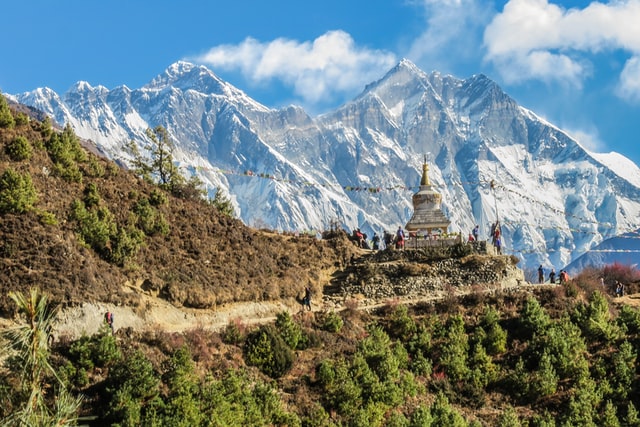
Nepal is humble in spite of its grandeur and remains the most beautiful country I have ever visited to date. The utter aggravation of landing in a polluted, traffic dense yet somehow welcoming capital city, with a panoramic backdrop of the Himalayan range is a contrast I hope to experience again and again. With that said, it was both challenging and rewarding to become familiar with the ins-and-outs of Kathmandu, gaze at Mount Everest up close, and receive the best eyebrow threading (ever) by a kind-eyed Nepali man.
While it is undoubtedly a magical place, that doesn’t mean you should be too relaxed about the trip planning. When I boarded the flight to Kathmandu, I wasn’t even sure of where I would be staying on the day of my arrival, which proved quite stressful in retrospect. Travel is all about learning from your mistakes, and while there is a certain charm in the naïveté of entering a foreign country, it doesn’t hurt to have an idea of what to expect.
Here are a few important things I wish I knew before traveling to Nepal.
7 Important Things I Wish I Knew Before Traveling to Nepal
1. Take probiotics before, during, and after your trip.
If you have a sensitive stomach, or even if you think you don’t (like me pre-Nepal), it is worth investing in non-refrigerated probiotics. Due to the changes in food, altitude, pollution, and the generally overwhelming feeling that starts to take shape upon entering Kathmandu, it is advised to consider how your intestines might react. In my case, the first three weeks in Nepal were a blur of running around with toilet paper and frantically searching for safe squatting spots.
After making a new friend from the UK and confiding my problem to her, she looked at me with a startled expression and said, “You mean you’re not taking probiotics?” Apparently, it was a no-brainer.
This is a much safer and non-chemically laden alternative to over-the-counter medications for the traveler’s D-word. I might add to this that if you’re prone to carsickness and plan to take a bus from Kathmandu to any other towns (which is cheaper than hiring a car), buy motion sickness pills. The ride will likely include scaling the sides of mountains at uncomfortably high speeds and nature’s wildest speed bumps ever. Consider yourself warned.
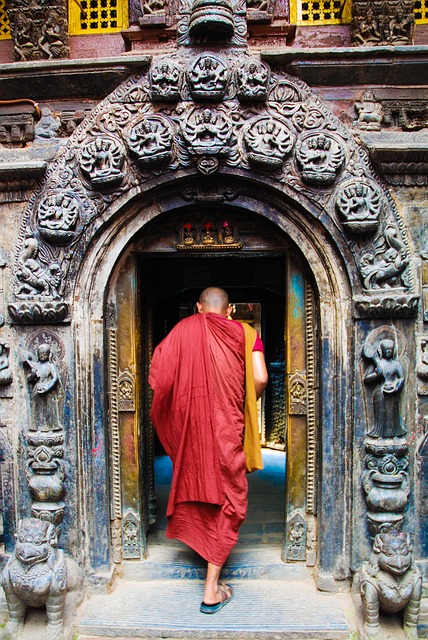
2. If you’re not a big time trekker, you can buy your supplies in Kathmandu at a fraction of the cost.
In spite of the number of times I have picked up and left with nothing but a backpack, it doesn’t necessarily indicate that I have come remotely close to mastering the art of packing light. I have a tendency to continue justifying every item until my 5’5” frame is carrying around a 20kg pack. Not fun.
Upon arriving in Kathmandu, we soon realized that everything from clothing to top-of-the-line trekking gear was available there, and it was cheap! The only exception to this are your trekking boots. They will need to be a perfect fit in every sense of the word as they protect the vehicle that is your feet while you’re up in the mountains. If you buy really good ones, they will last forever and you won’t need to break them in. The last thing you want is a boot malfunction while you’re on your way to base camp.
You may not be going to Nepal to trek, but even clothes (which are expected to be modest and loose fitting due to cultural norms) will be available all over town. You know those Tibetan shops back home that sell Harem pants for $40 bucks? Try $5-10 in Kathmandu. Most (not all) of the people in the Himalayas with the fancy gear are already seasoned hikers, and consider this equipment an investment. If it’s a one-time thing for you, don’t overspend or over-pack!
3. If you’re planning a trek, do NOT count on camping.
Yes, this is another one about trekking! We brought a tent all the way from Los Angeles and were burdened with the task of carrying it everywhere we went. Quite a hindrance if you’re always on the move, and our poor Sherpa tried explaining to us that we would not need it for the trek to base camp, but this important detail was lost in translation.
By our second night, we learned that there are several “teahouses” (similar to hostels but no WiFi and usually no heat) on the way up. We also learned (the hard way) that using a tent on or near a teahouse owner’s property allows them charge you double the price of a room. Given the prices and inconvenience of packing up the tent every morning at the crack of dawn, we opted to stay in the rooms, but the tent came up the mountain with us and proved to be quite an annoyance!
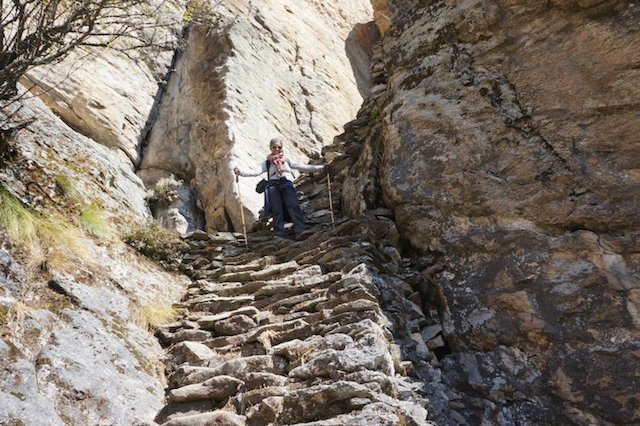
7 Things I Wish I Knew Before Traveling to Nepal
4. Two words: dhal bat.
I return to the topic of food and digestion. Mostly because Nepal was a very love-hate time between my stomach and me. After the first month, I had fewer problems but they could have been avoided if I had done a little more research about the available cuisine. Sensitive stomach? Then you know that as tempting as street food looks, try to avoid it unless you have been diligent with your probiotics.
Most importantly though, learn to love lentils. The staple meal in Nepal is a heaping pile of steamed white rice (and I mean heaping) and lentil curry called dhal bat. It is not spicy, very flavourful, and a safe bet every time. You will probably end up surviving on this and chai (tea).
5. Find out about the festivals and special occasions.
We were greeted by utter madness a week into our stay in Kathmandu with celebrations of the Nepalese living goddess, the Kumari. First of all, the Kumari is a small child adorned in beautiful, bright clothing and heavy make-up. Nepali people have great respect and adoration for the Kumari and therefore throw a huge celebration to honour her by marching the city streets behind her royal procession (occurs in late September – early October).
In the midst of the madness, my friend and I almost got caught in a mob. For a moment I actually had a sinking feeling that I would be trampled to death. He actually had to grab me and pull me up onto a platform above street level (lucky for us that there was one). It was not an angry mob by any means, but the crowds were dangerous and powerful.
It’s worth becoming aware of the happenings in the region you’re visiting beforehand. Naturally, trying to navigate through the streets during this time presents quite a challenge. In fact, it can be very disorienting when you’re new in town.
6. The electricity goes out at least two to five hours a day.
Some days are better than others. The Nepalese infrastructure doesn’t move at the speed our Western sensibilities are accustomed to. Which means you may want to prepare for this. You can buy a USB data stick through one of the mobile providers that will keep you connected wirelessly regardless of power. Also, you should consider investing in portable chargers. Portable chargers are convenient for charging your phone, iPod, or camera on the go especially when trekking. We did not have either of these things!
Fortunately I read a lot during this trip as there are fantastic bookstores all over Kathmandu (note: the same books we would get back home are significantly cheaper), but sometimes you just need to plug-in and let the social media world know how you’re doing!
This would have been especially useful when we were at altitude and sleeping in such cold temperatures. We had to keep our batteries in the sleeping bags so that they weren’t at 50% by morning. About four months later, I bought both in India and it made connecting to loved ones easier. It’s also actually less time consuming than waiting for the wireless speeds to improve.
7. Get over your fear of cold showers and squatting over holes.
Even though I had been to developing countries prior to visiting this Himalayan paradise, I had always managed to find toilets and hot showers somehow. Most hostels in Kathmandu will provide a hot shower (depending on your budget), but it’s not a guarantee. I still remember standing half-naked in an outhouse about 3000 m above sea level dumping a giant iron kettle of freshly boiled water into a bucket, and using a cup to give myself a pseudo-bath.
It was too much work, and very time consuming!
When you’re trekking, be prepared to pay a few extra bucks for hot water to bathe in. If you’re lucky a shower might be an option. The cost of bathing is not included in the price of the room. In the end, I never really stopped complaining about cold showers. But I eventually had to grit my teeth or reconcile being a dirty backpacker.
That, in addition to the intense quad-and-hammies work out every time I had to visit the ladies room has pretty much made me fearless of bathrooms. Worldwide.
Another couple of things worth keeping in mind when traveling to Nepal:
Shipping parcels is very inexpensive. I sent most of my trekking gear home at the end of the trip because we were headed to Thailand. I definitely wouldn’t need it there!
Lastly, be weary of Couchsurfing in Nepal. We met a couple of nice people. More often than not there will be trekking guides and business owners offering you a place to stay. They do this in order to pitch sales about their tours and prices almost immediately after you arrive.
There is no way to prepare for a Nepalese adventure perfectly. The locals have a tendency to say, “Whatever you agreed upon in the city will always change once you’re up in the mountains.” Try your best. But mentally prepare yourself to go with the flow!
7 Things I Wish I Knew Before Traveling to Nepal
Related Reading
6 Lessons I Learned While Traveling Solo in Nepal
Have you traveled to Nepal? What were your impressions? We’d love to know if there’s any important information you recommend adding to this list. Email us at editor@pinkpangea.com for information about sharing your experience and advice with the Pink Pangea community. We can’t wait to hear from you.
7 Things I Wish I Knew Before Traveling to Nepal photo credits: Nelish Lalany, Unsplash and Pixabay.



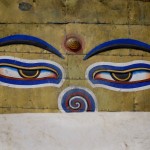
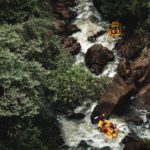


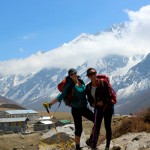
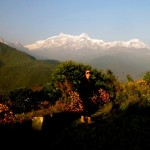
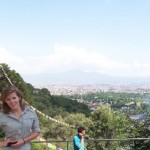
Great Post. Being a Nepali, It is interesting to know perspective from people around the world about Nepal.
And about power cut, its been few months that there has been no power cut in Nepal. I am from Kathmandu and it has been hard to believe how our new CEO of National Electricity Authority has managed to make this magic with his amazing leadership and management skills. 🙂
Yes, No power cut in Nepal. In winter like December, we were supposed to have 14-18 hours power cut. It was last year but this year on 2016, there is no power cut. UNBELIEVABLE!
Where can i buy probiotics in Nepal?
You might be able to get them in certain pharmacies in Kathmandu. But I wouldn’t be surprised if you couldn’t. They’re not exactly a thing here 🙂
I would suggest buying them at home beforehand if possible!
Great and useful post, just one edit – the 4 – 5 hours of no electricity is only in the summer… in the winter (dry season) it is more like 14 – 18 hours of no electricity!!
Useful advice for Nepal. I’m not sure I want to eat dhal daily + white rice. I actually eat white rice only 4-5 times per year. A drastic switch from how I grew up..rice nearly every dinner. I get hypoglycemic now. I really don’t feel well.